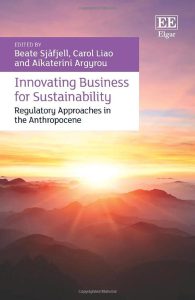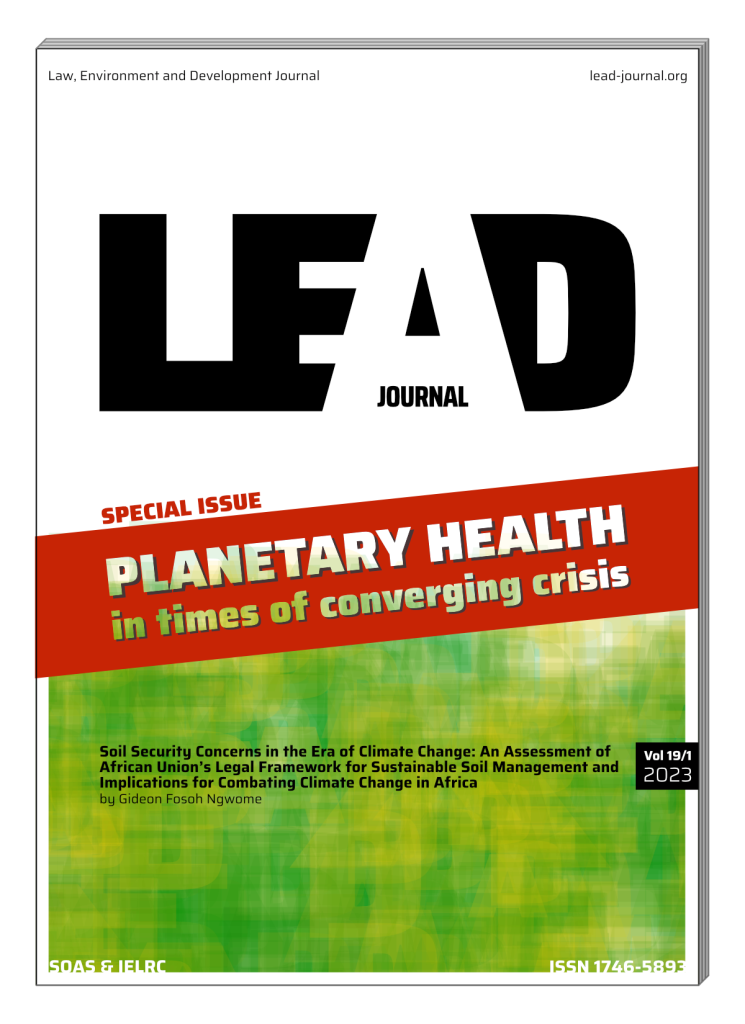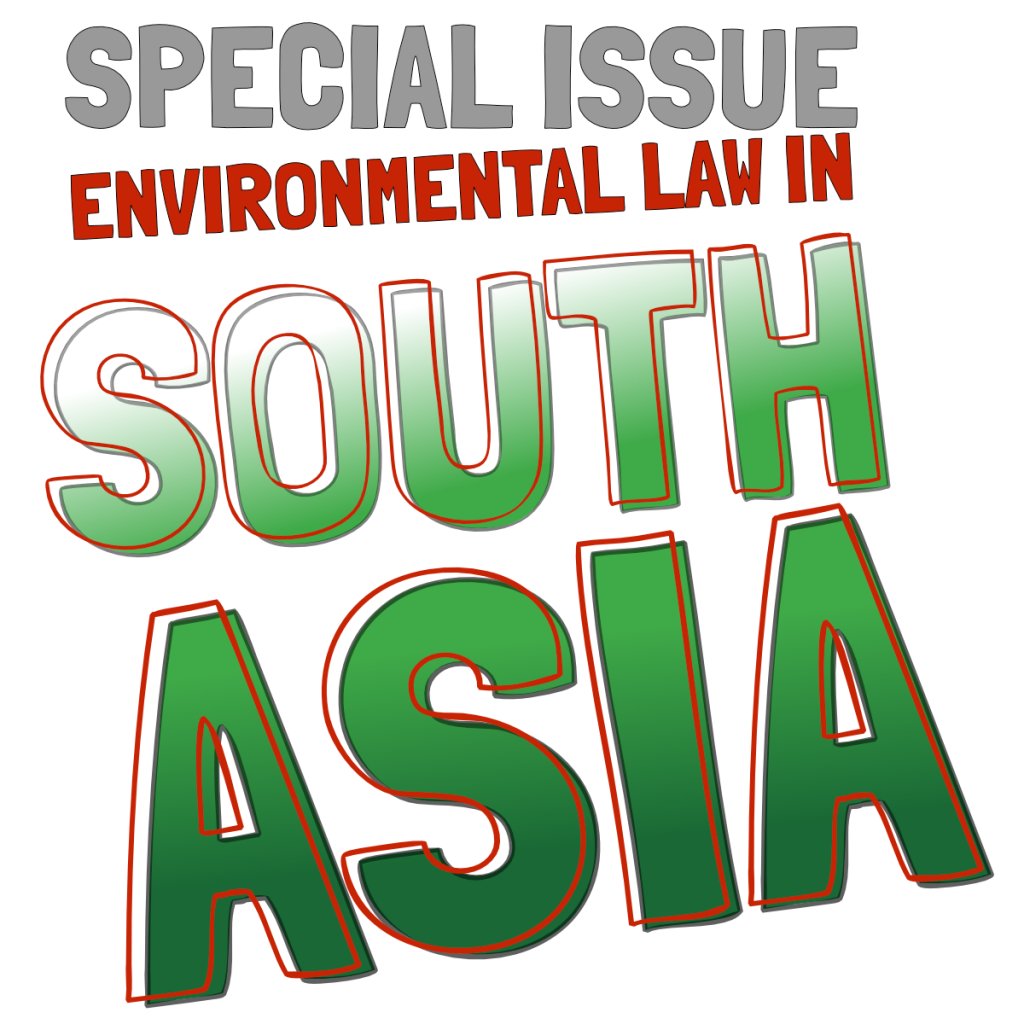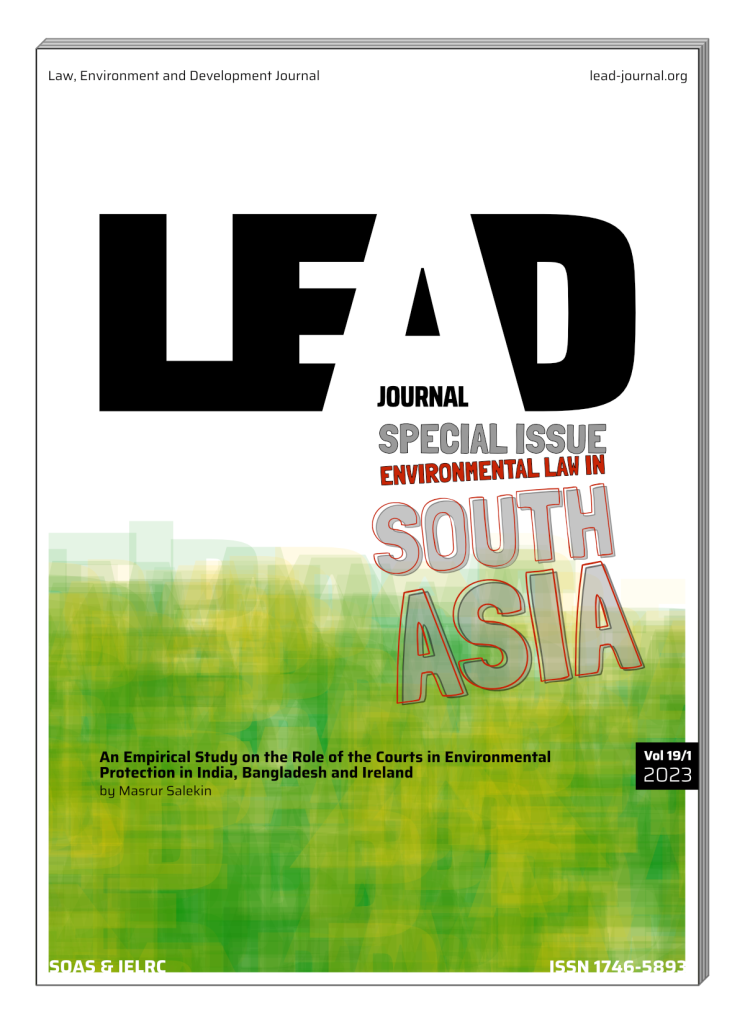
Volume 19/1
Regular Articles
Special Issue: Planetary Health in Times of Converging Crisis
Special Issue: Environmental Law and Governance in South Asia
Shripad Dharmadhikary
Privatisation of Natural Resource-Based Sectors, Ease of Doing Business, and the Law
In 1991, several sectors of the Indian economy which hitherto were more or less the exclusive domain of the public sector were opened up to private players, including global corporates. This was accompanied by a series of changes to the related policy, legal and regulatory regimes. This process has continued in the decades that followed. These policy, legal and regulatory changes, though mainly in the sectoral and financial domain have had significant implications for environmental, social and livelihoods impacts of activities in these sectors. This article proposes to trace some major changes in the legal, regulatory and governance frameworks which have had significant environmental, social and livelihood implications in three key sectors – water, electricity generation and coal mining. It shows how this shift in the legal regime has been driven mainly by the objective to promote “ease of doing business”, leading to neglect of social and environmental concerns. The article also documents how this thrust to prioritise business leads to more tolerance of non-compliance of environmental laws and creates pressure for their dilution. Last but not the least, the article highlights how compliance with environmental laws and regulations often needs actions that are under the purview of the financial and economic regulations and institutions. It argues for a proper understanding of this link and for designing sectoral, economic and environmental laws in a manner that they strengthen each other.
Hannah Wamuyu, Collins Odote & Stephen Obiero
The Utility of Epidemiology Evidence in Resolving Compensation Quandary in Kenya: Case Study of Thange Oil Spill, Makueni County, Kenya
Toxic torts that are non-occupational in nature have started to emerge in Kenyan courts posing challenges to legal practitioners regarding proof of causation of injuries owing to the latent nature of injuries from such torts that take time to show. This article examines the nature of environmental incident response mechanisms deployed upon an occurrence of a pollution event and identifies public health assessment as a priority response measure that should be utilised to collect crucial epidemiology evidence. The examination is conducted through documentary review of international and national legal instruments and journal articles as well as interviews and case law analysis. The article proffers that failure to conduct a public health assessment is a missed opportunity for compensation as collection of critical evidence of causation is missed and mitigation of damage is not undertaken for victims of toxic exposure.
Book Reviews
Innovating Business for Sustainability: Regulatory Approaches in the Anthropocene

Edited by: Beate Sjåfjell, Carol Liao & Aikaterini Argyrou
Published by Edward Elgar (2022)
Reviewed by David Kuhlmann

Special Issue


The world celebrated in 2022 the fiftieth anniversary of the Stockholm Conference, often considered as the birthplace of international environmental law. The early 1970s corresponded more broadly with the rapid development of environmental law throughout the world. It is appropriate at this juncture to reflect on the successes and limits of developments over the past five decades.
This anniversary also took place under the shadow of the COVID-19 pandemic. This still ongoing health crisis can help us address environmental challenges in the 2020s. While the pandemic-induced recessions did not lead to the greener future that was often foretold in 2020, various lessons can be drawn for the future. Over the past three years, governments around the world have shown an impressive willingness to take stringent measures and commit substantial public funds to address this public health crisis.
This can be contrasted with the response to environmental planetary crises. The cases of global warming, mass biodiversity extinction and land degradation are a few of the global environmental emergencies that have been well documented. Natural sciences whose data remains the prevailing basis for environmental law making have amply demonstrated the extraordinary gravity of the many crises that we are facing. This is the case even for such complex problems as climate change where a lot of long-term impacts cannot be predicted with absolute certainty. Despite this, the IPCC has published increasingly specific reports that provide much greater risks and certainty than what the world knew about the coronavirus when government’s imposed stringent measures to address the public health risk.
Reflecting on the fiftieth anniversary of Stockholm, the converging crises of the present moment require us to think around a number of broad themes:
- Critical reflections on environmental law from the point of view of planetary health in the context of the fiftieth anniversary of the Stockholm Conference;
- Decolonization and the environment, in its multiple forms and dimensions from the local to the global level;
- Critical perspectives on environmental justice and equity, in particular from the point of view of the global South and/or from a gender, social/racial equity point of view;
- Rethinking the bases for environmental law beyond the existing framing that has led to the current crises, such as paradigms going beyond sustainable development (including degrowth, radical ecological democracy);
- Critical reflections on evolving environmental governance and institutional developments;
- Critical reflections on public health and the environment.
Reflecting on these themes is crucial to think around the future of environmental law, which must evolve to be able to respond to evolving challenges, from the most local level dimensions to global threats.
Gideon Fosoh Ngwome
Soil Security Concerns in the Era of Climate Change: An Assessment of African Union’s Legal Framework for Sustainable Soil Management and Implications for Combating Climate Change in Africa
This paper makes a reflection on the nexus between soil and climate change, with a focus on how the latter has triggered a renewed concern about soil not only as a source of carbon emission, but more importantly, as a natural solution for combating climate change. The paper employs the content analysis and doctrinal methods to investigate the level of attention given to soil security and sustainable soil management (SSM) by relevant African Union (AU) legal instruments and the consequential climate change ramifications. The investigation and analysis reveal that the AU’s legal landscape for SSM and soil security is inadequate and in consequence, limits Member countries from leveraging on soil as a natural and cost-effective solution to combat climate change. Based on the insufficiencies, the paper makes some recommendations, the key one being the need for the AU to give soil a special legal attention by way of a specific and comprehensive African soil charter that does not only promote SSM, but also underscores the centrality of soil as a natural and cost-effective climate change solution.
John W. Head
Reflections on Stockholm, Decolonization, Restoration, and Global Ecological Governance
Although international environmental law has progressed in the 50 years since the Stockholm Conference, it suffers today from several structural deficiencies. These include anthropocentrism, conceptual shallowness, and global institutional timidity. Remedies for these deficiencies would involve (i) “species decolonization”, (ii) a reconceptualization from “sustainable development” to a more aggressive “process-relational restoration”, and (iii) a radical re-imagining of environmental governance regimes, involving something like “eco-states” and a new global institution to implement bold legal and structural reforms in ecological governance.
Patricia Kameri-Mbote, Balakrishna Pisupati, Aphrodite Smagadi, Allan Meso, Hyun Sung & Alvin Gachie
The Role of Environmental Law and Governance in Transformational Change to Address the Triple Planetary Crisis
In 2022, the global community celebrated the fiftieth anniversary of the United Nations Conference on the Human Environment. This also marked fifty years since the establishment of the United Nations Environment Programme (UNEP). Despite progress in global, regional, and national action including the progressive development of environmental law, we are confronted with ample evidence that we are putting extreme pressures on the planet. The pressures have contributed to three interconnected planetary crises facing humanity today, namely the climate crisis, the nature crisis and the pollution crisis. These crises, driven by decades of relentless and unsustainable consumption and production, are amplifying deep inequalities and threatening our collective future. A radical shift is required in the way we design and implement environmental laws to effectively manage our environment. This calls for an enhanced science-policy interface. Environmental law plays a central role in promoting elements of science policy interface, especially in relation to policy re-design and regulatory interventions to reduce the triple planetary crises of climate change, biodiversity loss and increasing pollution. This article focuses on positioning emerging discussions on environmental law and governance using key lessons in recent approaches to environmental rule making, emphasizing integrated approaches to environmental law; identifying options for having a kaleidoscopic view of future environmental law to ensure synergistic approaches to managing the triple planetary crises and re-shaping ecological democracy from an environmental law perspective. It also addresses the role of inclusive environmental law making in the future. Looking ahead 50 years on, the paper identifies opportunities for environmental governance and environmental rule of law to contribute to addressing the triple planetary crisis.

Special Issue

Environmental Law in South Asia
Environmental law in South Asia is standing at a cusp wherein critical environmental and developmental problems must be dealt with urgently with innovative thinking. In the twentieth century, the global environmental movement was led by western developed countries that prioritised environmental conservation and did not adequately integrate critical issues of development in the global South. Despite the collective voices raised by the developing South in the numerous environmental negotiations, countries of the Asian region have been grappling with development and environmental sustainability issues for decades. In the twenty-first century, Asian leadership will be crucial to address environmental and sustainability challenges both within the region and globally. The unique problems and issues faced by South Asian countries require not only an integration of international approaches but a strong emphasis on national and regional home-grown strategies.
The region of South Asia faces similar environmental challenges. The foremost amongst them is the link between environmental degradation and poverty. Globally, environmental benefits and risks are disproportionately distributed. However, in the context of South Asia, the problem of maldistribution is particularly acute and exacerbated by the pressure of pursuing economic development agenda, which concentrates, on large-scale infrastructure projects. Such large-scale infrastructure projects often require diversion of forestland. Unlike in developed countries, in rural areas, most indigenous and local communities have a symbiotic relationship with their hinterland, and diversion of forestland has an adverse impact on their ability to fulfil basic subsistence requirements. This has triggered numerous conflicts between state authorities and communities. At the heart of this is conflicts are differing visions of what constitutes sustainable and equitable development. Climate change has exacerbated these underlying historical resource conflicts and has also brought urgency to policy interventions to change the developmental pattern to minimise effects and build resilience.
Masrur Salekin
An Empirical Study on the Role of the Courts in Environmental Protection in India, Bangladesh and Ireland: Bridging the Gaps between Academics and Practitioners
What determines the stance of the judiciary of a country? Is it the individual characteristics of judges or the understanding of legal norms by judges or the legal and political culture of a country? How much influence do academic writings have in judicial pronouncements? Existing literature shows that there are various determining factors behind judicial decision-making. With the development of legal scholarship on the environment, it is important to see how far judicial decision-making is getting the benefit of that research. It is also important to know how environmental academics and practitioners are viewing the stance taken by the courts in environmental litigations. This research applies socio-legal methods, particularly qualitative research, based on data gathered through semi-structured interviews of judges, lawyers, academics, and researchers from India, Bangladesh, and Ireland to understand how they view the roles of the courts in environmental matters and how far the understandings of legal norms and writings of academics are reflected in environmental judicial decision making. Countries both from the east and the west based on constitutional and legal similarities have been selected to compare and contrast and to see if the research result is similar notwithstanding the socio-economic-political differences. This research adopts Thornberg’s informed grounded theory and in addition constant comparative method of data analysis is applied in analysing the collected data. Acknowledging the polycentric and interdisciplinary nature of environmental problems and considering the gaps accrued from collected data this paper provides recommendations to bridge the gaps between academics and practitioners.
Zelina Sultana & Nasrin Akter
Will We Care for the Soil Surrounding Us? An Analysis of Legal Framework for Soil Protection in Bangladesh
Soil as natural resources, is an amazing gift of nature and all living and non-living things are influenced by the soil in which it is imbibed. At present soil is highly polluted, contaminated and degraded mainly by different anthropogenic activities in Bangladesh. Until recently, the Government of Bangladesh had not enacted any law, policy or action plan to safeguard its soil in conformity with environmental conservation mandate detailed in its Constitution. Soil pollution has already crossed all borders and its protection is crucial to meet the contemporary global goals including achieving SDGs. Therefore, this article is an attempt to analyse present legal regime related to prevention of soil pollution, contamination and degradation (PCD) that results from different human activities such as industrialisation, unsustainable urbanisation, waste dumping, unsustainable soil use and management in Bangladesh. It finds that, soil PCD for such causes have already been addressed directly or indirectly in some legal instruments but those were insufficient, generic in nature and carried on along with lack of monitoring, accountability and implementation. However, if properly implemented, those measures might help to reduce soil PCD. Furthermore, soil PCD control is not possible without establishing accountability of the implementing authority, mass awareness and the enactment of legislation solely to protect the soil. Therefore, we argue that the implementation of existing law along with risk control policies and scientific guidelines are crucial to ensure soil management and protection. Finally we argue that impediments to the filing of suits in environmental courts should be lifted so as to ensure that common people have access to environmental justice in order to conserve the soil resources, achieve SDGs, and maintain a healthy natural world.
Niroshika Liyana Muhandiram & Ravneet Sandhu
Environmental Concerns in Model BITs: A Comparative Study of India and Sri Lanka
Investment flows pose one of the newest and greatest challenge in the pursuit of sustainable development. Developmental activities resulting from rapid industrialisation and unchecked exploitation of natural resources have come at the cost of environment, human health and labour standards. Traditionally, under investment law, there has been a binary relationship between the investors and the States. However, as a result of the rise in investor-state disputes and the lessons learned from investor-state arbitration, states have begun to revisit and reframe their Model Bilateral Investment Agreements (Model BITs) to strike a balance between the host state’s regulatory authority and investment promotion Essentially such BITs include specific language not only on investment promotion but also inter alia, on regulatory rights of the host state to protect the environment, human health and labour law. Significantly, the Bhopal Gas tragedy of India and the controversial Colombo Port city project of Sri Lanka have intensified the need of having a balanced approach in environmental protection and investment promotion. Hence, the purpose of this paper is to critically analyse the Model BITs of India and Sri Lanka to investigate the extent to which they are able to strike appropriate balance between these two paradigms. The paper further seeks to make suggestions to create coherence between these two interests to protect the environment from further degradation.
